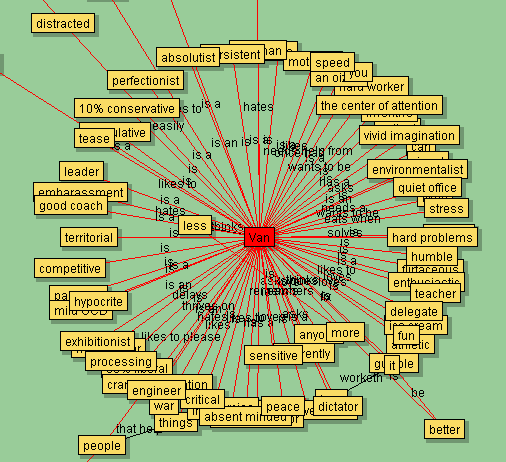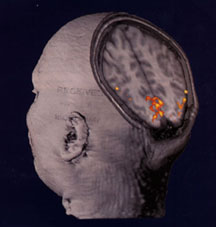If you think about it, the last two unexplored vistas are the cell and the brain. The excitement of the fifties and sixties regarding space, has given way to a geological, "this is a lifeless rock" point of view. More discoveries are likely to be made, but they will cost billions of dollars and require the dedication of one's entire life, all which can be erased by one misstep. Similar remarks can be made regarding ocean exploration. So for me, the brain and the cell are always available and can be explored at relatively low cost.
I am interested in the frequencies of brain waves. A site that covers that is here.
Since the brain, the cell, and even the stock market, are very complex systems, we have to adopt a bit of a different strategy when exploring them. Exploring isn't really sufficient, we have to log the results of our exploration in quickly digestible form. That is where knowledge mapping comes in. Another word for knowledge mapping is creating semantic nets, easily readable graphs that contain the information we seek.

Semantic nets are being used to model brain processes.
This is described here.
Functional MRI is being used to show thinking in real time in the basement of NIH.
Our brains are massively parallel, but have a relatively slow clock frequency.
I used to believe that are brains could process sound at 10,000 Hz as a set of protein chemical reactions. During reflection following a prolonged headache in Seattle, I deduced that this isn't true. I now believe that we only process 10,000 Hz sounds at about 20 Hz or so. Our cochleas just let us know that those harmonic are "on" in the current tune. A test for this would be the shortest chirp a person could detect the "just noticeable difference" in pitch. Another test would be to change frequency from 5000 Hz to 10,000 Hz at increasing frequencies from 0 to 40 Hz and measure whether the test subject could tell when it changed.
Cheers,
- Van
L. Van
Warren
Director
www.wdv.com
